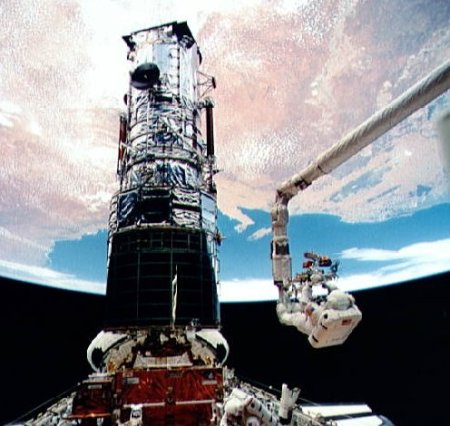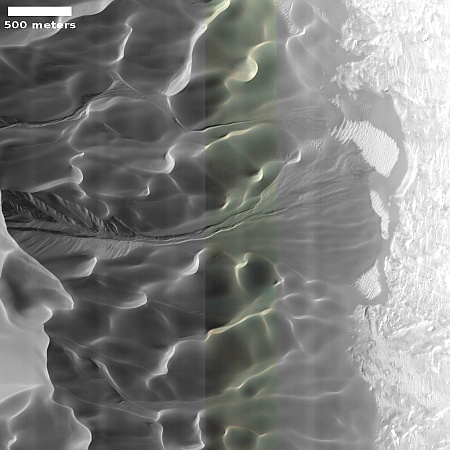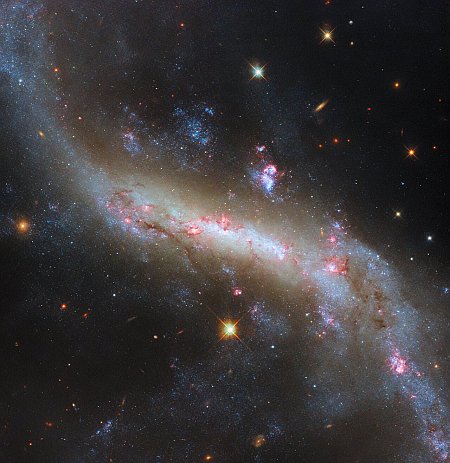A close-up of rocks on Mars
Cool image time! The picture to the right, cropped, reduced, and sharpened to post here, was taken on June 6, 2024 by Curiosity’s Mars Hand Lens Imager (MAHLI), located at the end of the rover’s robot arm and designed to get close-up high resolution images of the ground that the arm is exploring.
The picture above, taken just after the one to the right and cropped, reduced, sharpened, and annotated to post here, shows the robot arm shortly after it has rotated upward after placing MAHLI right up against the ground. Note the tread marks. The science team apparently chose these target rocks because they were likely ground somewhat as the rover rolled over them, breaking the rocks to expose new faces.
According to the scientists, the camera was about two to three inches away from these rocks when it snapped the picture, with the scale about 16 to 25 microns per pixel. Since a micron is one millionth of a meter, this picture is showing us some very small details within a much larger rock.
I post this because I have rarely seen such colorful and crystal-like surface features from Curiosity.
Cool image time! The picture to the right, cropped, reduced, and sharpened to post here, was taken on June 6, 2024 by Curiosity’s Mars Hand Lens Imager (MAHLI), located at the end of the rover’s robot arm and designed to get close-up high resolution images of the ground that the arm is exploring.
The picture above, taken just after the one to the right and cropped, reduced, sharpened, and annotated to post here, shows the robot arm shortly after it has rotated upward after placing MAHLI right up against the ground. Note the tread marks. The science team apparently chose these target rocks because they were likely ground somewhat as the rover rolled over them, breaking the rocks to expose new faces.
According to the scientists, the camera was about two to three inches away from these rocks when it snapped the picture, with the scale about 16 to 25 microns per pixel. Since a micron is one millionth of a meter, this picture is showing us some very small details within a much larger rock.
I post this because I have rarely seen such colorful and crystal-like surface features from Curiosity.


















